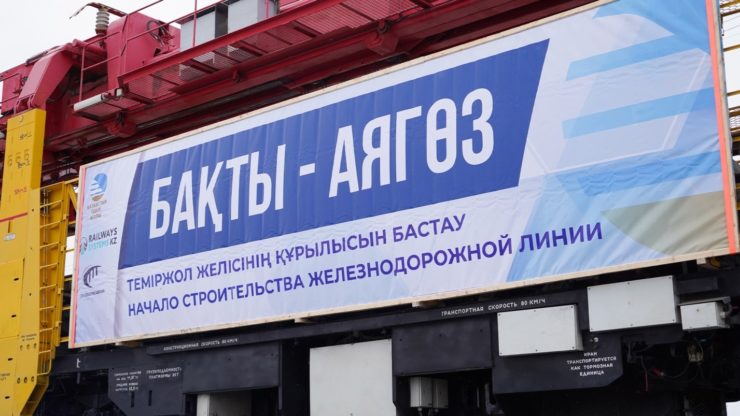
On December 21, 2023, Kazakhstan’s Prime Minister Alikhan Smailov gave the go-ahead for the construction of the new Bakhty-Ayagoz railway line in the Abay region. The project aims to construct a 272-kilometer double-track railway that will extend to the border of Kazakhstan and the PRC. The new line is expected to become operational in 2027.
Currently, there are two rail border crossings with developed freight terminals on the Sino-Kazakh border: Khorgos and Dostyk-Alashankou. Almost 50% of all cargo transported along the China-Europe route passes through these border crossings. This is nearly twice the amount that passes through the Russian-Chinese Manzhouli-Zabaikalsk border crossing point and 2.5 times more than the amount that passes through the Trans-Mongolian railway (Erenhot—Mongolian territory—Naushki). Therefore, it can be concluded that the operating capacity of these border crossings and their cargo terminals has almost reached their technical capacity. In the current conditions of the dynamic growth of “Eurasian transit” volumes, this situation will result in significant losses for several states, primarily Kazakhstan itself, which will lose a portion of the “transit rent.” Construction of the Bakhty-Ayagoz railway line began in December 2023 to prevent such a situation.
The two cross-border railway lines that currently exist, passing through the border of Kazakhstan and China, will soon be connected into a single main line in the Chinese city of Jinghe. After this connection, a single cargo flow will proceed to the east of China. The Bakhty-Ayagoz railway line enters the Kazakhstan-China border to the north of these rail border crossings and connects to the main railway line much further east. This will allow the capacity of the current bilateral corridors to be increased in the most efficient way by putting this road and its Chinese section into service, thus avoiding congestion on the rail network in the Xinjiang Uyghur Autonomous Region of the PRC. After the commissioning of the third rail border crossing on the border of the two countries, their total throughput capacity will increase by almost 40% (not just a third), from the current 28 million tons to 48 million.
Bakhty-Ayagoz is expected to be included in a new international corridor that will connect China to Europe through Kazakhstan and the Russian Federation. The Bakhty-Ayagoz line is oriented to the northwest, providing direct access to the Russian-Kazakh border via Semey and Pavlodar to Omsk (Russia) or to Chelyabinsk via Astana. Bakhty’s status as the northernmost rail border crossing on the PRC-Kazakhstan border supports this theory, as outlined in the national plans for the railway network’s development.
Bakhty-Ayagoz is a significant project for Kazakhstan’s development of Eurasian corridors. During his speech in the regular meeting of the Supreme Eurasian Economic Council on December 26, 2023, the President of Kazakhstan identified the construction of dry ports Bakhty and Kalzhat as the republic’s top priority projects in the transportation sector. The first one will be located at the point where the new railway line meets the border with China. The second potential dry port is situated on the border with China. Despite the remote location of Kalzhat settlement from current communications, it may become the starting point of the shortest transit route to the west via Almaty, the largest city in Kazakhstan, and connect it almost directly to the Chinese railway network in the future. It is also important to consider the construction of a railway line bypassing the city, which began in October 2023. This will speed up train transit time through this busy and lengthy section. By bypassing the Almaty bypass railway line, trains from the People’s Republic of China can reach the largest railroad hubs in Uzbekistan, as well as the Caspian ports of Kazakhstan and Turkmenistan, in the shortest possible time. However, the new railway line is important for bilateral transportation, which has grown significantly in 2023.
In the coming years, Kazakhstan plans to construct over 1,300 kilometers of new railway lines.
Kazakhstan’s recent transport and infrastructure projects demonstrate its active participation in all promising configurations of the “China-Europe” railway route. The country aims to increase capacity on the PRC-Kazakhstan-Russia-Europe lines while creating efficient routes to the Caspian Sea and other Central Asian railway lines from the PRC through Kazakhstan.
Boris Kushkhov, Department of Korea and Mongolia, Institute of Oriental Studies of the Russian Academy of Sciences, exclusively for the online magazine “New Eastern Outlook”